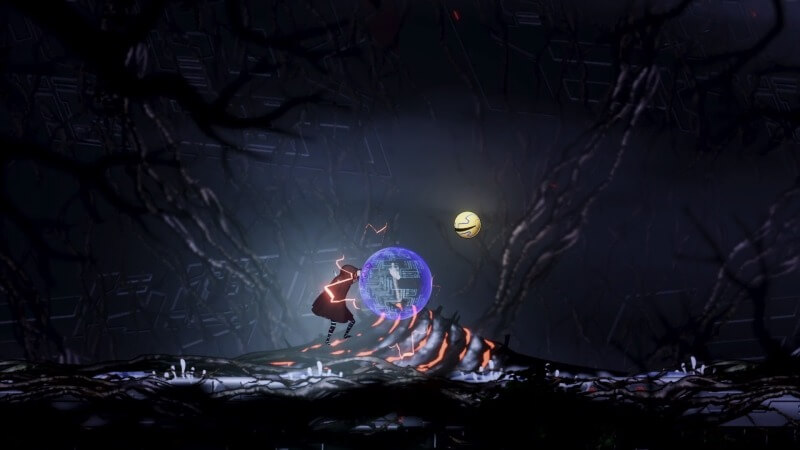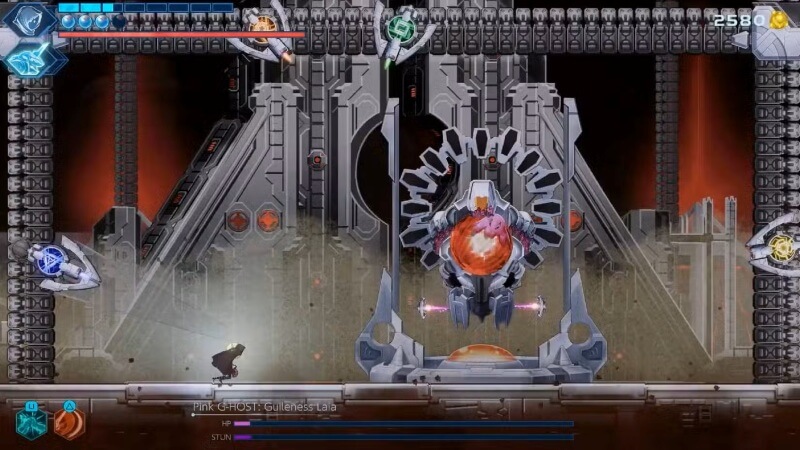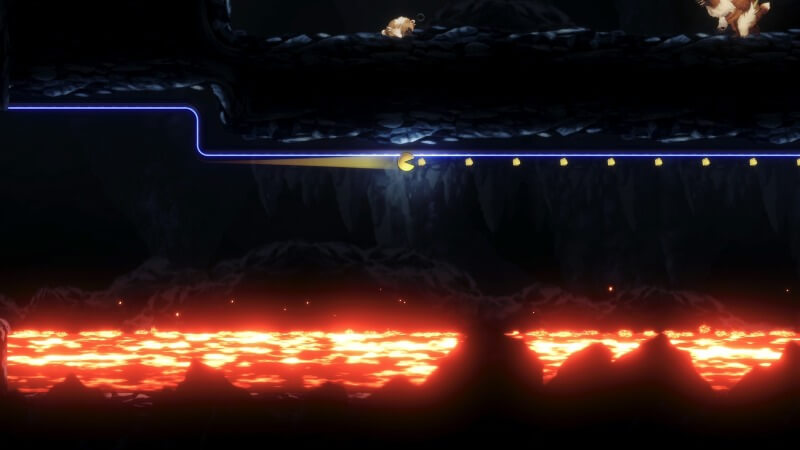Shadow Labyrinth: The First Pac-Troid Game Gets Lost in the IP Woods

When Shadow Labyrinth was announced it very quickly got tagged as that new weird Pac-Man game. That is not an inaccurate way to describe it. It is new, it is weird, and it is a game with Pac-Man in it. It’s not like any Pac-Man game you’ve ever played before, though, which is a big part of its weirdness. In Shadow Labyrinth Pac-Man isn’t the star but the annoying little helper who floats over your shoulder and constantly butts in to tell you what to do, like Navi from Ocarina of Time. Also their name is Puck, derived from their original Japanese game, and not Pac-Man. Also it turns out they’re more of a Ms. Pac-Man than a Pac-Man, anyway. And finally you’re not always eating dots and alternately chasing or being chased by ghosts, but only kind of doing that, on occasion, inside a game that owes way more to Metroid than any Pac-Man game.
Yes, Shadow Labyrinth is the latest work to dig through the deeply-plowed field of Metroid-inspired games. It’s a classic take on the formula, side-scrolling and everything, with the caverns of an alien world divided into branching sections that comprise a single connected whole. Eventually you can walk from the first room all the way to the very last, once you’ve acquired all the game’s power-ups and unlocked all its abilities and are no longer blocked by a certain type of wall you can’t break through or doors that need a specific security clearance. (It’s faster to just zap from one save point to another, of course.) Along the way you’ll jump, shoot, roll, air dash, and swing your way through its different areas, along with other means of locomotion, killing nasty creatures and looking for the next power-up that’ll let you continue your progress. It’s about as Metroid as these things get.
Zoom out far enough and you can argue that Metroid games already have some crucial elements in common with Pac-Man, which might make Shadow Labyrinth’s mash-up make more sense. They may not fit on a single screen like Pac-Man’s levels, but Metroid’s sprawling, winding worlds are effectively one giant maze. The round energy capsules Samus eats to restore her health could easily be called power pellets. And what does Samus resemble when she rolls up into the morph ball if not an orange and red Pac-Man?

That last similarity is where Shadow Labyrinth’s Metroid / Pac-Man crossover fits the best. You don’t often control Pac-Man directly here, but when you do it’s similar to the morph ball sections from Nintendo’s series. Your playable character is suddenly round and compact and able to go where you otherwise couldn’t. And Shadow Labyrinth completes the Pac-Man of it all by having the yellow orb move at a steady pace in whatever direction its facing (you can disable this, and probably should for accuracy’s sake) and placing dots alongside the tracks your Pac-Man-shaped partner clings to, just to give them a little treat along the way.
Shadow Labyrinth dips even more deeply into Pac-Man with certain maze levels that can be entered at tombstone-looking points across the map. You’ll start seeing these very early in the game, but in keeping with the genre, it’ll be several hours before you’re able to actually enter any of them. These mazes have more in common with the utterly exceptional Pac-Man Championship Edition DX (a game from 2010 that I still regularly revisit and get hooked on all over again), complete with sometimes using its music, culminating in boss battles that bring a little something new to the table. They’re not a major part of Shadow Labyrinth but they’re a welcome one, and you’ll probably find yourself hunting down every one of them once you’re able to play them.
-

-

-

-

-

-

-

-

-

-

-

-

-

-

-

-

-

-

-

-

-

-

-

-

-

-

-

-

-

-

-

-

-

-

-

-

-

-

-

-









































